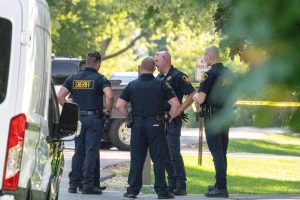Authorities assess threats with basic guidelines
March 4, 2008
In the wake of the Feb. 14 shootings, there have been threats of violence on other school campuses, with some referencing other shootings. How these threats are handled is unique to each school and incident, but there may be some basic guidelines for assessing them.
Kirk Miller, assistant professor of sociology at NIU, said there are certain things to look for that can enhance the probability that a threat could materialize.
“Among the key issues is the degree of specificity, [such as] dates, places, substance,” Miller said. “That is, the more real the threat, the more likely officials are to take it seriously.”
There were two recently reported threats on the NIU campus before the Feb. 14 shootings, though neither has been found to be linked to that event. The first threat, discovered on Dec. 8, was believed to have referenced “Dec. 10” and the “Holmes Student Center.” The public was told about the incident and the university was closed on Dec. 10, due to weather in addition to circumstances surrounding the threat.
The second threat was found Feb. 7 and it reportedly did not contain a specific date or location for a possible attack. There wasn’t a university closing or public warning after that incident.
An FBI report, “The School Shooter: A Threat Assessment Perspective,” gives detailed information on the handling of such threats.
“Specific plausible details are a critical factor in evaluating a threat,” the report states. “Specific details can indicate that substantial thought, planning, and preparatory steps have already been taken, suggesting a higher risk that the threatener will follow through on his threat.”
A threat made at the University of Illinois-Chicago on Feb. 15 resulted in the offender being arrested and charged with felony disorderly conduct.
A UIC security alert on Feb. 15 stated: “A full-scale investigation is underway in conjunction with the Chicago police, and patrols on campus, already stepped up in the wake of Thursday’s tragedy at Northern Illinois University, have been increased further.”
However these threats are assessed, it doesn’t change the fact that an individual actually made the threat in the first place. No one knows for sure why such acts occur, but Miller has an idea.
“I think it is largely a function of culture that is mediated and obsessed with celebrity even if the basis of that celebrity is notoriety rather than merit,” he said.






